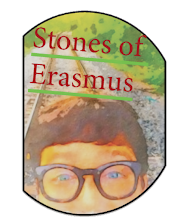 |
| Interior, The Watson Library, image: the Metropolitan Museum of Art |
Probably not as obvious an option for quiet study space as the Rose Main Reading room at the New York Public Library, but the Metropolitan Museum of Art hosts the Watson Library, a quiet space hidden amidst the buzzing interior of the Met on fifth avenue adjacent to Central Park. Access to this space is available to anyone with a research interest in Art History. (Hint: just say you are interested in researching art history and you're in. They won't grill you for proof of serious research intent).
While the mission of the library privileges use by museum researchers, the library is not foreclosed to seekers of quiet reading and study space in New York City. To obtain access to the library one has to state an area of research interest and present a photo ID, and fill out a registration form. Once supplied with a proper library card, one does not need to pay admission to the museum to use the library. Simply present yourself at the information desk to gain access. All bags must be checked-in prior to entrance.
The library is a closed stacks library so if a book is needed from the library’s collection, the call number must be recorded and a patron can page the book at the circulation desk. For simple quiet space, a place to read or to study, the Watson library is superb. The setting is heavily academic and very quiet, so do not expect comfy overstuffed chairs or vibrant colors. This is a no-frills place to read and to catch up on one’s knowledge of Mondrian or Picasso.
Further Information:
Where: The Metropolitan Museum of Art, 1000 5th Avenue, New York, NY 10028, First Floor
Public Hours: Weekdays: Monday–Friday 10 am–5:15 pm; book retrieval until 3:30 pm.
Further Information:
Where: The Metropolitan Museum of Art, 1000 5th Avenue, New York, NY 10028, First Floor
Public Hours: Weekdays: Monday–Friday 10 am–5:15 pm; book retrieval until 3:30 pm.
Directions: Subway: 4,5,6 to 86th St.; A,B,C to 86th street (and walk across the park)
Contact: Watson Library Contact Form
Telephone: 212-650-2312
Contact: Watson Library Contact Form
Telephone: 212-650-2312




